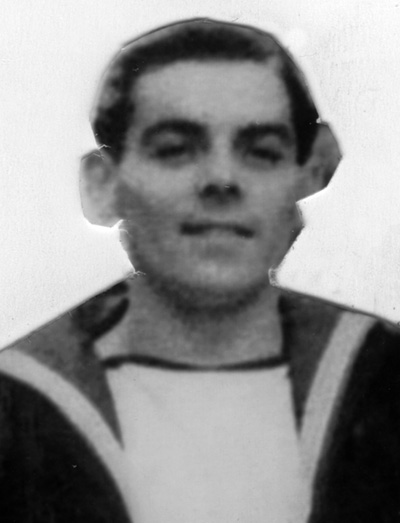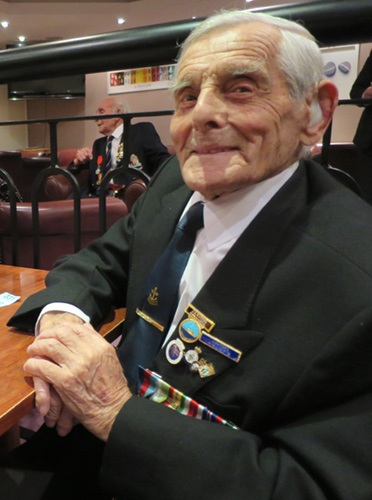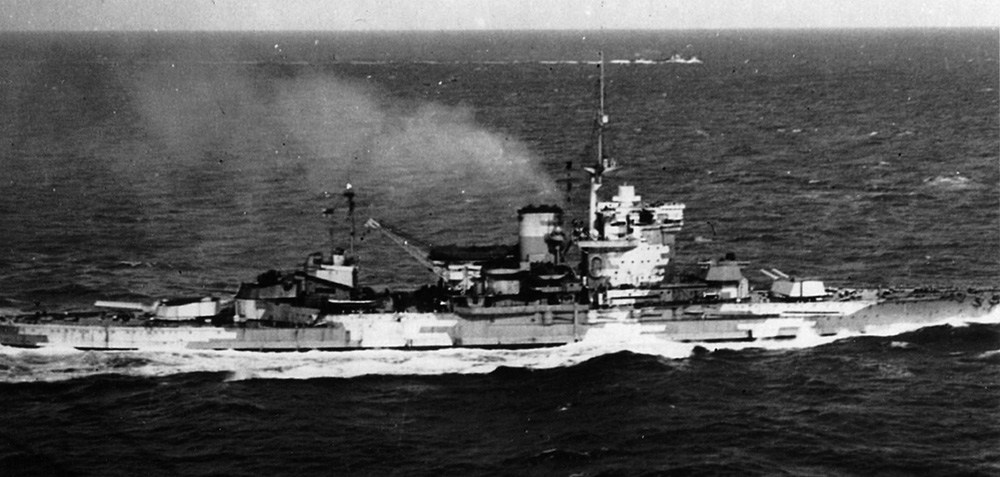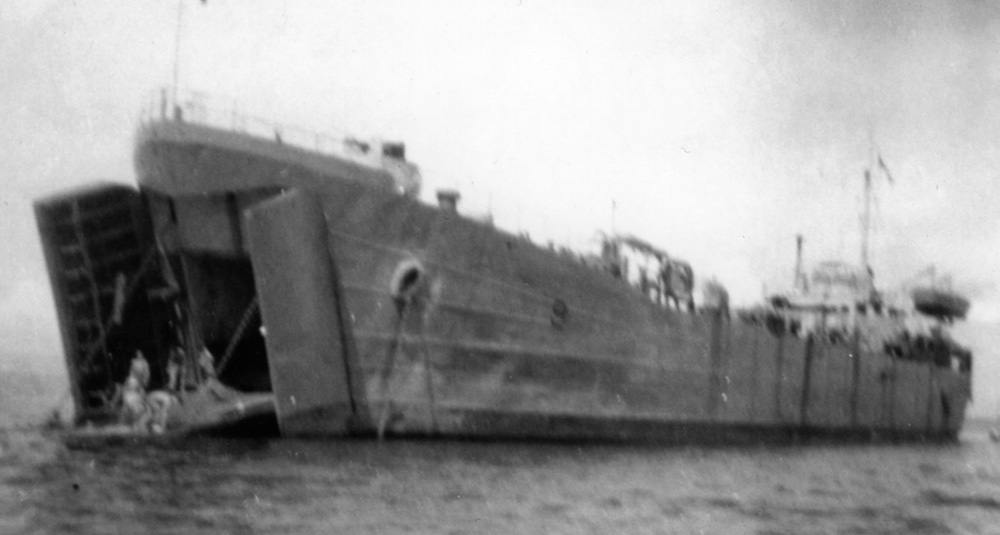
 HMS WAKEFUL
HMS WAKEFUL
Click on the links within this brief outline for first hand accounts by
the men who served on HMS Wakeful and for a more detailed chronolgy see www.naval-history.net
HMS
Wakeful was the first Royal
Navy warship to carry that name. She was completed in December 1917 and
saw service with the Grand Fleet in the final months of ther Great War
and was present in November 1918 when the German High Sea Fleet entered
Scapa Flow to surrender. Wakeful was part of the British Baltic Intervention Force and on the 24 December 1918 left Tallinn in Estonia with Vendetta and Vortigern and captured a Bolshevik destroyer bombarding a lighthouse. On Christmas Day Wakeful with the cruisers HMS Calypso and Caradoc forced another Bolshevic destroyer to surrender. These two Bolshevik destroyers, renamed Wambola and Lennuk, formed the nucleus of the Estonian Navy.
HMS Wakeful was
in reserve for most of the interwar years but was recommissioned in
1939 and was present at the Royal Review of the Reserve Fleet in
Weymouth Bay in August. On the outbreak of war she joined the 17th
Destroyer Flotilla at Plymouth as a convoy escort in the Western
Approaches and the English Channel until May 1940 when she was
transferred to Dover Command and supported the evacuation of troops
from Dunkirk. On the 27 May she embarked 630 troops from Dunkirk for
Dover and was damaged above the waterline in an air attack. She
returned to Dunkirk on the 28 May, embarked 640 troops on the 29 May
and was was attacked off the Belgium coast by E-boats based at Antwerp
which emerged from the mist while Wakeful
was returning to Dover. She was torpedoed twice, once in the boiler
room and split in two with the bow sinking immediately (ADM 358/3640). Only one
soldier and 25 crew members survived and HMS Grafton was also sunk whiler attempting to rescue survivors. A complete list of the ship's Company and her passengers including the names of those who survived the sinking and those killed can be seen on the linked page.
One of sixteen W Class destroyers built under the War Emergency Programme in 1943-4 was named HMS Wakeful and served in the Home Fleet, transferring to the Eastern Fleet in 1944, and then the Pacific Fleet. She was converted to a Type 15 Frigate sfter the war and was scrapped in 1971. For further details of the reuse of V & W Class names by ships built under this programmne see the linked article by Frank Donald.
Commanding Officers
| Cdr Somerville Peregrine Brownlow Russell RN (26 Nov 1917 - 19 July 1918) Lt John R. Crothers RN (June – July 1935) |
Lt Cdr M.A.G. Child RN (17 June - 13 July 1939) Cdr. Robert St. Vincent Sherbrooke, RN (31 July - 8 Dec 1939) Lt. Cdr. Ralph Lindsay Fisher, RN (18 Dec 1939 - 29 May 1940) |
Officers
This short list of officers who served on HMS Wakeful have entries on the unithistories.com web site. Further names from the Navy List will be added later.
| Lt Claude Beevor King RN (Oct 1923 – Jan 1925) Lt John R. Crothers RN (June – July 1935) Lt Claude Beevor King RN (Oct 1923 – Jan 1925) |
Lt Terence C. Robinson RN (May - July 1927) Lt Walter Scott RN (16 Oct 1939 – April 1940) Acting Gunner (T) S W E Townsend RN (21 Oct 1939 - 29 May 1940) |
The loss of HMS Wakeful
One of the greatest naval disasters of the War
Lt. Cdr. Ralph Lindsay Fisher, RN was appointed CO of HMS Wakeful in December 1939 and his ship was lost at Dunkirk on the 29 May with 640 troops aboard. One soldier and 25 crew members survived. This description of the disaster was written by her CO, Lt Cdr Fisher RN, who retired as a Rear Admiral in 1957 and wrote Salt Horse, A Naval Life, a self published autobiography in the late 70s, which contained this vivid description of the loss of Wakeful.
**********
"We anchored off Braye Sanatorium, unable to get nearer than about a quarter of a mile from the beach on which long queues of soldiers were waiting. It was comforting to be in company with plenty of friendly vessels including, next door to us, the new destroyer Jaguar with much better ant-aircraft armaments than Wakeful. However, there was low cloud and rain that afternoon and bombing attacks were few and ineffective but getting the troops onboard was painfully slow. Our boat would row into the beach only to be swamped by eager troops and immovably grounded. There were other boats about but they tended to be abandoned by soldiers who had finished with them and let them driift away. During some eight hours we got about 640 troops onboard and sailed after dark. Wisely - or perhaps unwisely as it turned out - I had insisted that all troops should be stowed as low as possible so as to preserve stability in case we should have to manoeuvre at high speed to avoid bombs. At fifteen men to the ton 600 men constituted a serious top weight consideration in a ship the size of Wakeful. Accordingly they were stuffed into engine room, boiler rooms and store rooms. The route this time was by Zuydcootte Pass, where I felt our propellers hitting the sand and then up to Kwinte Buoy where one would turn west for Dover. So as not to reveal ourselves to aircraft by a bright wake we went at only 12 knots until we neared the Kwinte Buoy where any enemy might be lurking and then increased to 20 knots with a wide zigzag. Phosphorescence was very bright.
The buoy was brightly flashing once a second and when it was about a quarter of a mile on our starboard bow I saw two tracks like white swords coming towards us from that direction. We avoided one but the other torpedo hit us on the forward boiler room with, I remember, a brilliant white flash. It transpired after the war that these torpedoes were fired by Lieutenant Zimmerman from 'E-boat' S30 hiding behind the brightly flashing buoy. A well planned attack and a good shot. Wakeful was cut in two and the halves sank immediately until their broken ends grounded on the bottom, the forepart rolled over to starboard and it cannot have been more than 15 seconds before I found myself swimming off the bridge.Grafton (Cdr
Charles Robinson) was torpedoed by U-62 at 0250 shortly followed by a
second torpedo. She had 800 troops aboard including survivors from Wakeful but could not be saved. Only one of the ten soldiers on Wakeful
survived this second sinking, Stanley Patrick. Fisher had
several staff appointments in the Mediterranean but was given command
of HMS Musketeer in October 1943. His official report on the loss of HMS Wakeful can be seen in the National Archives at Kew, ADM 199/789.
The names of those Killed or Missing Presumed Killed (MPK)
| ANDREWS, William C, Able Seaman, C/SSX 29520, killed ARNOLD, Frederick L, Able Seaman, C/JX 153104, killed ASHFORD, Alfred J, Stoker Petty Officer, C/K 23200, killed AYTON, Ronald J, Able Seaman, RNVR, C/LD/X 2902, killed BAINES, Robert, Able Seaman, C/JX 152112, killed BALLS, Gilbert R, Able Seaman, C/SSX 28169, killed BARTLETT, Frederick W, Stoker 1c, C/K 62829 B 23823, killed BENNETT, Phillip F, Ordinary Seaman, C/SSX 29897, MPK BRACE, Christopher, Able Seaman, C/J 78429, killed BRAMLEY, George A J, Stoker 1c, C/K 67212 B 23817, killed BROOKS, Herbert S J, Able Seaman, C/JX 160919, killed BUCKLAND, Henry J, Stoker 2c, C/KX 102574, killed BUER, John G, Signalman, C/JX 142007, killed CAMPBELL, Harry E, Ordinary Seaman, RNVR, C/LD/X 5210, killed CAREY, Victor, Stoker 2c, C/KX 102656, killed CHAPMAN, Henry J, Stoker 1c, C/K 52018 B 21397, killed CLAYTON, Walter, Able Seaman, C/J 113848, killed COOKE, Albert H, Stoker 2c, C/KX 102658, killed COTTERILL, Edward, Stoker 1c, C/K 65069 D 290, killed CRANEFIELD, William L, Sub Lieutenant, MPK CREAK, Wilfred P, Py/Sub Lieutenant, MPK DOWNIE, John, Ordinary Seaman, C/JX 169123, killed DRAKE, Herbert Y, Chief Petty Officer, C/J 93083, killed EASTON, Charles W, Able Seaman, RFR, C/SS 9633 B 18174, killed EDGELEY, Charles T, Ordinary Seaman, C/SSX 29893, killed FERGUSON, Richard T, Leading Seaman, C/JX 125537, killed FITZGERALD, Denis P, Stoker Petty Officer, C/K 66458, killed FLETCHER, Arthur N J, Ordinary Seaman, C/JX 168966, killed FLOWER, John B, Able Seaman, RFR, C/J 103774 B 23930, killed FORSTER, Thomas J, Stoker Petty Officer, C/K 19617 10598, killed FORSTER, William, Chief Engine Room Artificer, C/MX 53281, killed FRANKLIN, Douglas F, Stoker 1c, C/K 56789 B 22044, killed FRASI, Francis J, Able Seaman, RNVR, C/LD/X 2914, killed GIBBS, Robert A, Petty Officer, C/JX 162567, killed GOODERHAM, William F, Able Seaman, C/J 60988, killed GOULD, Arthur A, Canteen Manager, NAAFI, MPK GRAVER, Charles H, Able Seaman, C/JX 152146, killed GRAYLEY, Harry J, Leading Seaman, C/SSX 14208, killed GROVES, Charles J, Petty Officer, C/JX 126444, killed GUTHERLESS, Leonard F, Yeoman of Signals, C/J 50606 Pens 13512, killed GUTHRIE, William R, Leading Supply Assistant, C/MX 57967, killed HALL, Archibald H, Able Seaman, RFR, C/SS 9022 B 17951, killed HALL, Edward S, Supply Petty Officer, C/M 43535, killed HAYNES, George E, Assistant Cook, C/MX 60742, killed HUNT, Charles G W, Leading Seaman, C/JX 134373, killed HUTTLESTONE, Sidney J, Able Seaman, RFR, C/SS 10718 B 19554, killed HYMAS, Albert W, Chief Petty Officer, C/M 4378 Pens No 23451, killed INGRAM, James D, Able Seaman, C/JX 126357, killed JACKSON, George H, Stoker 1c, C/K 60678, killed KEFFORD, Charles P, Stoker 1c, RFR, C/K 66397 B 24344, killed KEMP, Albert, Chief Petty Officer Stoker, C/K 57861, killed LEVERINGTON, Ernest, Stoker 1c, RFR, C/K 66497 B 24852, killed |
MATHERS, Stanley A, Sick Berth Attendant, RNASBR, C/X 7307, killed MCCLUNE, Angus, Engine Room Artificer, C/MX 52403, killed MCCULLOUGH, Stanley, Stoker 1c, C/KX 76209, killed METCALF, John R, Ordinary Seaman, RNVR, C/TD/X 2215, killed METCALF, William B, Ordinary Seaman, RNVR, C/TD/X 2100, killed MILLGATE, Herbert W, Able Seaman, RFR, C/J 95898 B 23309, killed MOUNT, Aubrey G E, Stoker Petty Officer, C/K 67097, killed NIXON, John L, Able Seaman, RNVR, C/TD/X 1789, killed PARKER, Robert F, Able Seaman, RFR, C/J 103074 B 23864, killed PATTERSON, John R, Leading Steward, C/LX 21537, killed PERCIVAL-JONES, John S, Sub Lieutenant, MPK POTTER, William, Ordinary Seaman, RNVR, C/TD/X 1962, killed REDFERN, William, Able Seaman, D/SSX 20993, killed RICKETTS, William E, Able Seaman, RFR, C/J 89429 B 21747, killed RILEY, Bert, Ordinary Seaman, C/SSX 30064, killed SARGEANT, James E, Leading Stoker, C/KX 79842, killed SARGENT, Frank G B, Chief Engine Room Artificer, C/M 765 Pens No 24963, killed SHARMAN, Edgar A, Leading Steward, C/LX 21668, killed SIMMONDS, William A, Able Seaman, RFR, C/J 98779 B 22251, killed SMITH, Leonard, Able Seaman, C/JX 128251, killed SPACKMAN, John F, Ordinary Seaman, C/SSX 29889, killed SPARKES, Robert G R, Leading Seaman, RFR, C/J 109740 B 25020, killed STEARN, Victor G, Ordinary Seaman, C/SSX 29761, killed STILES, Richard L, Act/Leading Telegraphist, C/JX 138350, killed STRATFULL, Prince C, Stoker 1c, RFR, C/K 58307 B 21952, killed STURGEON, Frank H, Able Seaman, RFR, C/J 100661 B 23484, killed SWAIN, George, Leading Stoker, RFR, C/KX 75596 B 24608, killed TALLENT, Ernest J, Act/Leading Stoker, D/KX 85419, killed TAYLOR, Edward A, Able Seaman, RFR, C/JX 125588 B 25274, killed TAYLOR, Joseph T, Able Seaman, RNVR, C/LD/X 2203, killed TAYLOR, Percy E, Ordinary Seaman, C/JX 182647, killed THURSTON, James, Petty Officer Telegraphist, C/J 34496 Pens 11534, killed TILLEY, William E, Ordinary Seaman, C/SSX 29623, killed TOHILL, John, Able Seaman, RFR, C/JX 126123 B 25318, killed TOMPSETT, Leslie C, Able Seaman, C/JX 149097, killed TUCKER, Harold J, Warrant Engineer, MPK TURNER, John, Stoker 1c, C/KX 76796, killed TURNER, William, Leading Signalman, C/JX 131943, killed VICKERY, Leonard F, Chief Engine Room Artificer, C/M 7055 Pens No 2202, killed WALKER, Douglas G, Py/Ty/Surgeon Lieutenant, RNVR, MPK WILLIAMS, William, Leading Steward, C/L 14593, killed WINSTANLEY, Joseph R, Leading Stoker, RFR, C/KX 76786 B 24918, killed WOOD, Henry R, Stoker 1c, RFR, C/K 59956 B 23316, killed WOODROFFE, Walter, Leading Signalman, RFR, C/J 13387 B 19290, killed WORRELL, Stanley F, Ordinary Seaman, C/JX 171313, killed WRIGHT, Joseph W, Ordinary Seaman, RNVR, C/TD/X 1775, killed FORSYTHE, Donald C, Greaser, T.124, killed HORNE, George J W, Fireman, T.124/40996, killed LEWIS, George E, Ordinary Signalman, C/SSX 28150, killed POOLE, Denny W L, Greaser, T.124/38521, killed WATT, Joseph, Seaman, RNR (PS), LT/JX 167169, killed WOOD, Herbert, Seaman, RNR, P/JX 167164, killed |
|
Members of the Wardroom on 29 May 1940
Cdr W L Fisher RN (Appointed 18 Dec 39) Lt W Scott RN (6 Oct 1939) Lt L C Williams RN (3 Nov 1939) Temp Surg Lt D G Walker RNVR (10 Apr 1940) MPK Sub Lt John S Percival - Jones RN (8 Jan 1940) MPK Sub Lt (proby) W P Creak RN (19 Feb 190) MPK Sub Lt William L. Cranefield RN MPK Temp Sub Lt F W H Mayo RNVR (12 Feb 1940) Act Gnr (T) S W E Townsend RN (21 Oct 1939) Wrt Eng Harold J Tucker RN (16 Sep 1938) MPK Mid M M Petterson RNR (31 Jul 1939) |
John Waters who served in HMS Wakeful
before she was torpedoed by E-boats and sank with heavy loss of life
during the Dunkirk evacuation on the 29 May 1940 died on Su nday 14 October at the age of 97. I interviewed him at
the reunion of the V & W Destroyer Association at Harrogate in 2015
and these notes are based on that interview and many other converations
at annual reunions. John was only in Wakeful
for a few months as he broke both his wrists descending the focsle
ladder in a heavy sea three months before she was torpedoed. This
accident almost certainly saved his life.
He went on to serve in HMS Warspite at Narvik in Norway and at the Battle of Matapan in the Mediterranean and was left severely deaf after Warspite was bombed off Crete. He volunteered for Combined Operations and served in LST 9 at the landings in Sicily and Salerno. After the success of the Normandy Landings he was part of Naval Party 1730 which followed the troops to Hamburg towards the end of the war and stayed at the Four Seasons Hotel, the Vier Jahreszeiten, still the best hotel in Hamburg. He describes his experience below and in the interview which can be listened to online via a link below.

 John Waters was born on the 5 March
1921 at Easington Lane, ten miles South of Sunderland in Co Durham. His
father was a miner but when John left school at 14 he was determined
not to follow him down the pitts. Since there was no work in Co Durham he moved
to Leicester and started an apprenticeship as a bricklayer. He was bored and at eighteen joined
the Navy and was sent to Chatham for shore training, passed
out as an OD and was posted to HMS Wakeful
at Devonport, Plymouth, in September.
John Waters was born on the 5 March
1921 at Easington Lane, ten miles South of Sunderland in Co Durham. His
father was a miner but when John left school at 14 he was determined
not to follow him down the pitts. Since there was no work in Co Durham he moved
to Leicester and started an apprenticeship as a bricklayer. He was bored and at eighteen joined
the Navy and was sent to Chatham for shore training, passed
out as an OD and was posted to HMS Wakeful
at Devonport, Plymouth, in September.


Bill Forster recorded an interview with John Waters at the V & W Association reunion at Harrogate in 2015
You can click on the link to listen to John describe his wartime service in HMS Wakeful, HMS Warspite and LST 9
be patient - it takes a couple of
minutes before the file opens and John starts speaking
BETWEEN THE WARS
Conditions on V & W Class
destroyers were so bad in rough weather that the men who served on them
were paid hard-lying money. These stories by veterans who served on
HMS Wakeful were published in Hard Lying,
the magazine of the V & W Destroyer Association and republished in
2005 by the Chairman of the Association,
Clifford ("Stormy") Fairweather, in the book of the same name which is
now out of print. They are reproduced here by kind permission of
Clifford Fairweather. Copyright remains with the authors and
photographers who are credited where known.